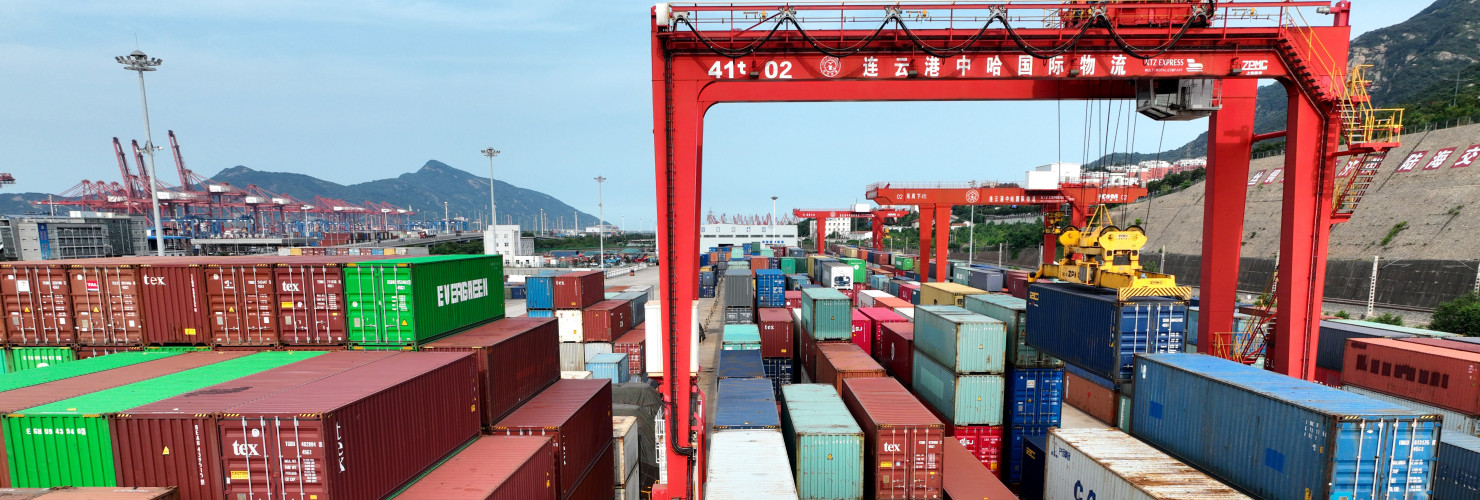

De-risking is not new to China, so why the surprise at the EU’s new policy?
China has been practicing a policy of de-risking for decades, couched in terms of self-sufficiency, writes Francesca Ghiretti. But it is displeased with the EU’s new policy nonetheless. This article is part of our series on China’s strategies to reduce vulnerabilities.
The reaction in China to the European Union’s new policy of “de-risking” has been both surprise and dismay. Chinese state media and leaders, including the ambassador to the EU, Fu Cong, have criticized how the EU is managing security risks that emerge from its economic relationship with China while still striving to maintain its economic ties. This likely stems from China’s perception of the EU as a liberal economic actor, built on years of a relationship based on the logic of economic gains. However valid its concerns, China’s position reflects a double standard, as China has been practicing de-risking itself for quite some time. Arguably, the People’s Republic of China (PRC) and the Chinese Communist Party (CCP) have been de-risking since their very foundation. And de-risking has been blatantly evident in the Xi Jinping era, couched in terms of self-sufficiency.
Early expressions of self-sufficiency can be found, for example, in the China Integrated Circuit Industry Investment Fund, established in 2014 as a state fund for building and strengthening China’s microchip value chain. A year later came a milestone of China’s de-risking: the 13th Five-Year-Plan introducing Made in China 2025 (中国制2025), whose main objective was to ensure the growth of China’s self-reliance, reduce its dependencies on foreign actors, and make China an industrial leader by 2049. As shown in a MERICS report published in 2016, China set targets to ensure its self-reliance, including a plan to increase the domestic market share of Chinese suppliers for "basic core components and important basic materials" to 70%.
MiC25 is a cornerstone of Xi Jinping’s effort to de-risk, but much more has emerged since. In 2016, China published its National Innovation-Driven Development Strategy (国家创新驱动发展战略纲要). This strategy includes wording on the need to wrest control of core technologies from others, and the need to create advantages for China in this heavily contested field.
China’s de-risking has become more all-encompassing
Self-reliance was thus a focus for the CCP well before the EU’s own de-risking, before the discussion about “decoupling,” and well before the tensions with the US. Since 2018 and the onset of the US-China trade war, China’s de-risking has only become more pressing and all-encompassing. At the seventh meeting of the Central Financial and Economic Affairs Commission on April 10, 2020, at the height of the pandemic, Xi delivered the speech “Major Issues Concerning China’s Strategies for Mid-to-Long-Term Economic and Social Development” (国家中长期经济社会发展战略若干重大问题). The speech contains strong references to self-sufficiency and de-risking as well as to the idea of “dual-circulation”:
"We must sustain and enhance our superiority across the entire production chain in sectors such as high-speed rail, electric power equipment, new energy, and communications equipment, and improve industrial quality; and we must tighten international production chains’ dependence on China, forming powerful countermeasures and deterrent capabilities based on artificially cutting off supply to foreigners. Second, we must make up for our shortcomings. That is, in sectors and segments related to national security, we must build a domestic supply system that is independently controllable and secure and reliable, so that self-circulation (自我循环) can be accomplished at critical moments, and ensure that the economy operates normally in extreme situations." (Xi Jinping speech, April 10, 2020)
The dual circulation policy (国内国际双循环), announced in the 14th Five-Year Plan in March 2021, advocates for an economy based on two types of circulation, domestic and international. The internal cycle is formed by strengthening the domestic economy and consolidating social development. The goal is to swiftly reduce China’s reliance on foreign technology and imported resources and to double down on existing plans for industrial modernization and technological innovation. When that is not possible because China has not reached its desired level of development in a particular item or sector, or because resources are located elsewhere, the external circle can be used.
China continues to strive for self-sufficiency. In 2023, at the National Development and Reform Commission (NDRC) meeting in July, the Central Committee and the State Council once again included in its economic agenda for the second semester a call to boost domestic innovation capacities and diminish reliance on foreign countries for core technologies.
The EU seeks to de-risk only where necessary
These efforts are just a small sampling of China’s de-risking agenda, a thriving set of policies, in the making long before the EU formulated its own de-risking agenda. But there is one notable difference between the two concepts of de-risking: The EU would still greatly prefer an open, transparent and regulated global trade regime, one that must respond to changing global dynamics, including the impact on the EU of China’s own de-risking. As such, it is still an approach that seeks to de-risk only where necessary and leave as much openness as possible. However, the EU still has not fully nailed down where it must de-risk and where it can avoid such policies. China, on the other hand, follows the opposite logic: de-risk wherever you can and rely on globalization where you must.
